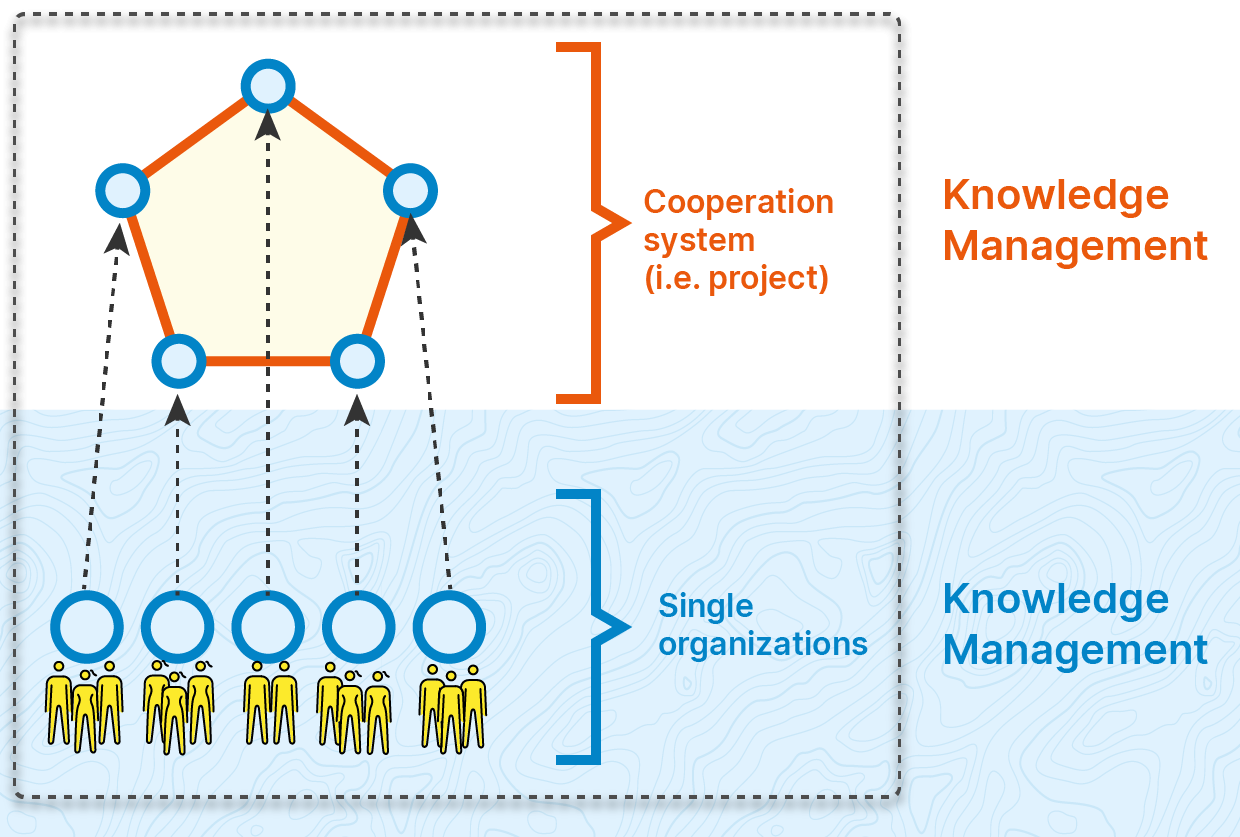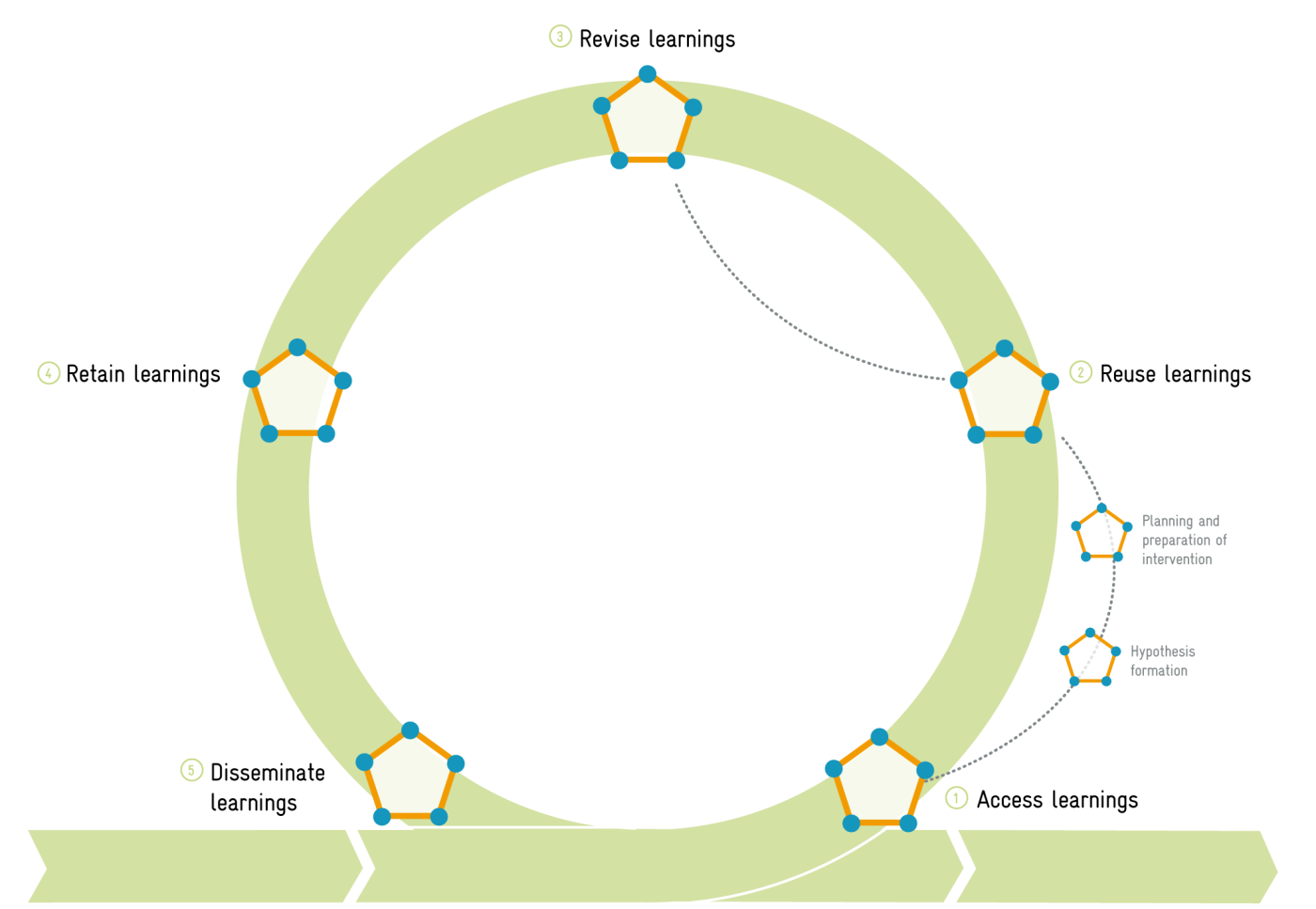Introducing the Knowledge Management Framework
- Published on
- Authors
-
-
- Name
- gianluca
-
The approach
Over the past two decades, researchers and practitioners from a wide range of disciplines have argued that knowledge is central to any innovation and learning processes within firms and organisations. Likewise, knowledge management was shown to be the key factor for competing in global markets as well as for achieving impact through international development cooperation.
However, when it comes to managing knowledge effectively, the field of international development cooperation (e.g. for climate action) poses complex challenges in terms of agenda coordination, promoting good practices and impact evaluation for the multitude of implementing organisations working at different levels – from local to global.

The KM-framework (KM-f) has been developed exactly to better address those challenges. It provides conceptual tools and methods for the planning and the provision of effective knowledge management services to strengthen memorization, coordination and learning within and across projects. The KM-f is essentially about:
- generating mutual understanding among KM practitioners and to develop a common conceptualization which combines different mental models as well as existing knowledge management systems;
- the design of KM strategy and the implementation of concrete knowledge management measures for organizations;
- the identification of approaches to data driven decision taking exploiting, if necessary, Artificial Intelligence (AI) methods to integrate, align and aggregate huge repositories of heterogeneous data.
Knowledge management (KM) for social systems
First of all KM may apply to single organizations, like for example private companies, NGOs or governmental agencies.
KM may also apply to cooperation systems, that is aggregations of single organizations, like single projects in international development cooperation.

But KM can also apply to a network of projects and organizations where each individual person, organization or project need to learn from each other. That’s why we refer to this type of social system as co-learning system.

How to study and analyze the co-creation of knowledge and sharing of information in such social systems?
Six principles
The methodology is based on 6 principles that together frame the main features of co-creation and transfer of information and knowledge across social systems.
- Principle 1: push & pull. Any knowledge life cycle always involves two sides, one representing the demand for knowledge (the pull side) and the other one standing for the existing offer of knowledge (the push side). Knowledge management seeks to balance the push and the pull.
- Principle 2: data vs information vs knowledge. Knowledge differs intrinsically from data and information. It is essential that a KM approach takes this difference into account.
- Principle 3: knowledge types. Knowledge is always specialized, and the development of KM strategies requires its classification.
- Principle 4: the knowledge value chain. The dynamics of knowledge creation and transfer in organizational contexts follow a 4 phases pattern, i.e., discussion, documentation, synthesis, search & adaptation.
- Principle 5: the data value chain. Data and data structures are the building blocks of information. The data value chain involves four main stages: data collection, data publishing, data uptake and data impact.
- Principle 6: the four organizational legs. Both the data value chain and the knowledge value chain take place in social contexts and involve four major organizational dimensions: people, processes, technologies and governance. It is through these dimensions that the data and knowledge value chains become effective.
Steps for implementation
The KM-f also provides an operational model for the planning of knowledge management activities.
Step 1: Needs analysis and strategic definition of objectives
The first step is about the assessment of knowledge and information needs in a given social system and the identification of goals and interim results expected by all the involved stakeholders.
Step 2: Organizational analysis, gap identification and development of change strategies
The Step 2 is about detailing the findings from Step 1 into concrete possible KM measures. To this aim the 6 principles are adopted, meaning push and pull dynamics are identified, as well as types of data and knowledge involved into the co-learning system, the 4 organizational legs are studied and possible gaps identified, and finally possible change strategies to strengthen co-learning in the system are developed.
Step 3: Implementation of pilots to test the effectiveness of the proposed organizational changes
The third Step is about the piloting of the interventions identified in step 2 and pilot results should be carefully evaluated against expected results before taking the decision to go for a full implementation.
Step 4 and 5: Training and roll out
The fourth and fifth steps are about the rolling out of pilot results so to make those changes part of the organizational DNA of the system.
All emojis designed by OpenMoji – the open-source emoji and icon project. License: CC BY-SA 4.0
